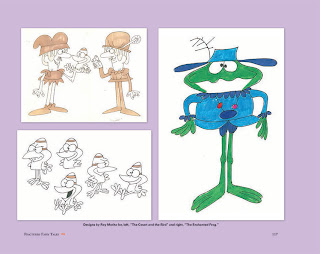Since tomorrow will mark the 63rd anniversary of Mr. Magoo’s debut in The Ragtime Bear, it seemed like a good time to hear from someone who was there for Magoo’s inception had to say about the character's origins. Following is an excerpt from either a 1956 internal memo or lecture by UPA production manager, Herb Klynn:
The conception of Mr. Magoo, the near-sighted and lovable, muttering old gentlemen, whose myopic weakness leads him into hilarious adventures born of blurred vision and a belief by him that everyone and everything is well-nigh perfect, came about as an idea that the cartoon screen could benefit from introduction of a character somewhat of the lines of the late loveable W. C. Fields. Experimentally, such a character was written into a short subject script (“The Ragtime Bear”) as a secondary character around which much of the action evolved. The resultant acclimation and complete enjoyment of the audiences to this new character succeeded far beyond our fondest expectations, and Mister Magoo became a factual, existent character destined for certain stardom.
Mister Magoo has changed somewhat, physically, form his original character, changes having been made here and there as the cartoons developed into a series of adventures of the near-sighted gentleman. Today, he is world-famous, and the winner of one of the famed Academy of Motion Picture Arts and Sciences’ Oscar awards, for this film adventures in “When Magoo Flew”…
After a brief discussion of the success of Gerald McBoing Boing, Klynn continues, showing that not everyone at UPA dismissed the idea of recurring characters:
Our next idea? Our next character-star? Who can tell? We’ll probably meet up with it or with him-tonight when we’re driving home-or tomorrow, over the luncheon table in a crowded restaurant. Of for all we know, maybe just as we’re dosing (sic) off to sleep some night next week, which means a night without sleep was we roll and toss the idea around to see how many possibilities it possesses!
At any rate, whatever or whenever the source, it’s fun! And our only hope is that which is fun to us, proves profitable to the company because only in this way can we continue enjoying our work-and or life-to the hilt!
Sadly for the studio, there were to be no more ‘star’ characters. Mr. Magoo, however, has lasted far beyond what any of the UPA artists would have ever believed. Happy Birthday, Mr. Magoo!


















































